In the early years of the 1900s, lunch boxes were simple objects. Typically workers used and re-used metal pails, tobacco, biscuit, or candy tins to carry their lunch to work. As time passed, this cherished object that held a sandwich and a thermos became a pop-culture icon
From there, it was a small step to a box specifically made for that purpose, and in 1902 the first true kids’ lunch box came out. No, it didn’t feature turn-of-the-century pop culture idols like P. T. Barnum, Buffalo Bill or Sousa’s Band–it was shaped like a picnic basket with pictures of playing children lithographed on its side.
The lunch pail wasn’t really a pail; it was a latching, heavy-duty metal thing made from a toolbox-grade metal that would protect the working man’s noontime meal from anything less powerful than a small bomb.
A lunch pail wasn’t chic–on the contrary, it was a sign you were far enough down the pay scale that you didn’t have time or money for a decent hot noontime meal. Still, children in the 1880s created their own school “lunch pails” out of the colorful tin boxes that once housed biscuits, cookies and tobacco.
With increasing industrialization resulting in Americans working outside the home in factories, it became unfeasible to go home to lunch every day, thus it was necessary to have something to protect and transport a meal. Since the 19th century, American industrial workers have used sturdy containers to hold hardy lunches, consisting of foods such as hard-boiled eggs, vegetables, meat, coffee, and pie. David Shayt, curator of the Smithsonian National Museum of American History, states that “Some of our earliest examples, from the 19th century, were woven baskets with handles. A meal would be wrapped in a handkerchief. Depending on your station, a fancy wooden box would be used by the wealthy.” Tinplate boxes and recycled biscuit tins commonly were used in the early 1800s, and fitted metal pails and boxes began to appear around the 1850s. Patents started to appear for lunchbox inventions in the 1860s.
The Thermos, a vacuum flask adapted for lunch box use, was introduced in 1904. The Thermos, which enabled hot or cold beverages to remain at optimal temperature until lunchtime, became a common component of the lunch box.
The first modern lunch box featured comic strip, film, cartoon, and television characters. For instance, the beloved figure Hopalong Cassidy was the first image to be placed onto a lunch box. The Aladdin Company of Nashville, TN stuck a Hopalong Cassidy decal onto a metal catch-all box and started a fad in 1950. Following Hopalong Cassidy, cowboy Roy Rogers’ likeness was put on a lunch box in colorful lithograph metal in 1953.
In 1935, Geuder, Paeschke and Frey produced the first licensed character lunch box, Mickey Mouse. It was a lithographed oval tin, with a pull-out tray inside. It had no vacuum bottle, but did have a handle.
In 1950, Aladdin Industries created the first children’s lunch box based on a television show, Hopalong Cassidy. The Hopalong Cassidy lunch kit, or “Hoppy,” quickly became Aladdin’s cash cow. Debuting in time for back-to-school 1950, it would go on to sell 600,000 units in its first year alone, each at a modest $2.39 USD.
During the 1950s, manufacturers saw a potential for sales. Manufacturers grew to include ADCO Liberty, American Thermos (later King Seeley Thermos, or KST), Kruger Manufacturing Company, Landers, Frary and Clark (Universal), Okay Industries, and a number of other producers through the 1980s.
The mid 1950s Disney lunch boxes appealed to Steamboat Willie cartoon fans and the children of the post-World War II baby boom. For $2.69, the yellow domed Disney School Bus lunch box made by Universal was expensive by 1956 standards. The Walt Disney School Bus lunch box had an image of a bus full of Disney pals including Mickey and Minnie Mouse, Dumbo the Elephant, Jiminy Cricket, Pinocchio, and Pluto. This lunchbox sells to collectors for $500 in excellent condition. In the 1960s and 1970s, Barbie lunch boxes were made of pink vinyl-over-cardboard as were character lunch boxes featuring Scooby Doo and the whole gang from the Mystery Machine Volkswagen Microbus.
“Not just cowboys and Indians, how about using a TV cowboy? Maybe Hopalong Cassidy?” Aladdin, taking a cue from the auto market, had stumbled into the idea of planned obsolescence in which people would replace perfectly good products for the sake of fleeting style. The company hired a top industrial designer who sketched out a prototype of the cowboy star, which they slapped onto the side of a red lunch box. On the strength of that, they convinced a big department store chain to make an advance order of 50,000.
To everyone’s surprise, the “Hoppy” lunch box jumped off the shelves. Fueled by a craze for anything seen on TV, Aladdin sold 600,000 at $2.39 each in their first year. (They had even greater success in 1952 with another decal of another hot show: Tom Corbin, Space Cadet.)
The lunch box, also referred to as a lunch pail, is used to store food to be taken anywhere. The concept of a food container has existed for a long time, but it was not until people began using tobacco tins to haul meals in the early 20th century, followed by the use of lithographed images on metal, that the containers became a staple of youth, and a marketable product.
A lunch kit comprises the actual “box” and a matching vacuum bottle. However, pop culture has more often embraced the singular term lunch box, which is now most commonly used.
The lunch box has most often been used by schoolchildren to take packed lunches, or a snack, from home to school. The most common modern form is a small case with a clasp and handle, often printed with a colorful image that can either be generic or based on children’s television shows or films. Use of lithographed metal to produce lunch boxes in the 1950s, 1960s, 1970s and 1980s gave way in the 1990s to use of injection-molded plastic.

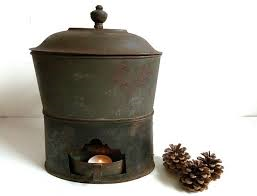
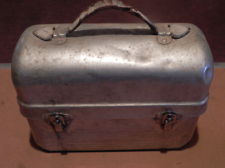
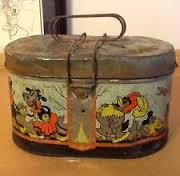
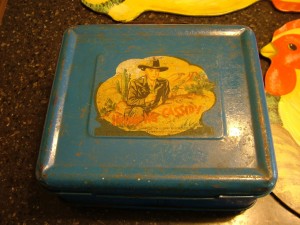
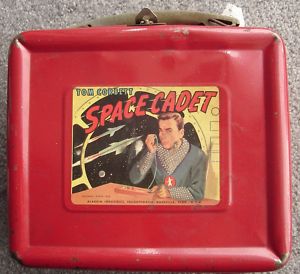
Leave a Reply
You must be logged in to post a comment.